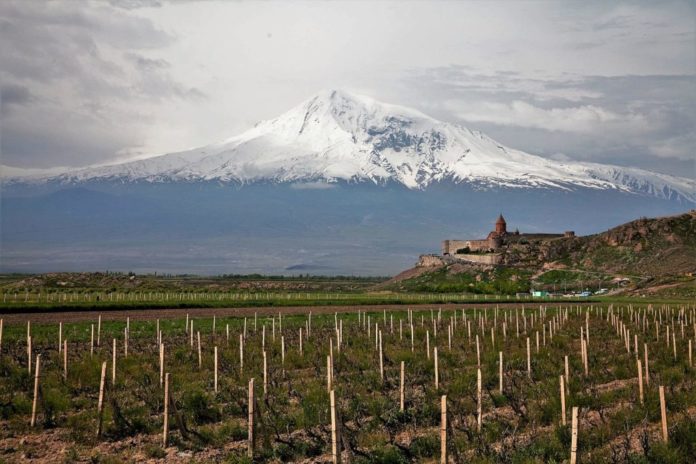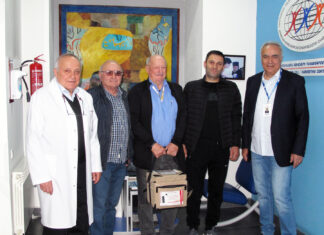It was Winston Churchill who made Armenian brandy famous. When Stalin introduced him to it at Yalta, he was immediately hooked. One story has it that, when asked to explain how he had managed to stay so healthy at an advanced age, he answered: “Three things: never be late for dinner, smoke Havana cigars and drink Armenian cognac.” (Another version has it, he answered: “Cuban cigars, Armenian brandy and no sport.“)
No one who has tasted Ararat brandy could disagree.
But Armenia has not only brandy to tempt the palate. Together with its legendary cuisine, it also has a wide range of wines, product of a long history of winemaking. Recently two Germans have launched an initiative to publicize this little known fact. Michael Richter comes from Bernkastel on the Mosel, famous for its own wines. With a long family tradition behind him, the connoisseur has joined with Berlin journalist Rainer Schubert to launch a website, www.weinreisen.de which is carefully researched and documented. It is part of a wine project called www.wein-inside.de. Their aim is to spread the good news about Armenia’s wines, in hopes of encouraging tourism and promoting investment in the sector.
Armenia’s vineyards go back as far as 6,000 years ago, according to archaeological discoveries made in 2010. Since Armenia was part of the Soviet Union for 70 years, its wines were produced and consumed mainly there. But today about 16,000 hectares are cultivated with native types of grapes.
Rima Abrahamyan from the Vine and Wine Foundation of Armenia compiled an overview of Armenia’s wine landscape for www.weinreisen.de, divided into five wine regions. At an altitude of 1000 to 1800 meters above sea level, vineyards planted with indigenous grapes are cultivated, and thrive thanks to the varied conditions, 306 days of sunshine per year and a volcanic soil, rich in basalt, tuff and obsidian.
Aragatsotn is a wine region reaching back to the time of Noah. About 1000-1400 meters above sea level, the region lies near Yerevan, with Ararat visible in the distance. This is the birthplace of the old Armenian grape type Voskehat, known as the “queen” of Armenian grapes, and was first cultivated 3500 years ago. Among the wine-growing estates here are the Armenian Wine Company, Golden Grape ArmAs, Van Ardi, Voskevaz Winery, Mnatsakanyan Gastro Yard, Tsaghkents Maran Gastro Yard and Yeganyans’ Guest House and Wine Yard. Many of these winegrowers are family enterprises with a long tradition; others are younger and have benefited from cooperation with the United Nations Development Programme and high tech input from Italy.









